I am committed to doing a series of stories from people in my community. Their stories hold their truth and I am just the storytelling vessel. This is my interpretation of a conversation with a woman who grew up in my community that wishes to remain anonymous. I will refer to her only as Mrs. M. The story is much more about the community growing up than her growing up in the community.
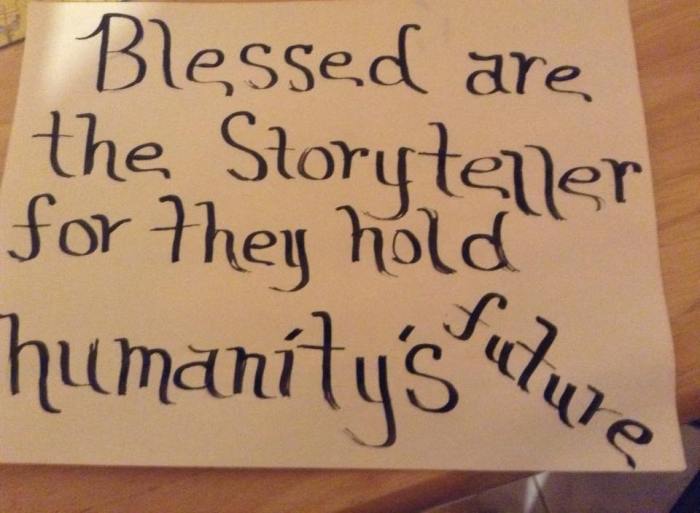
Originally the Three Hills area was comprised of two plantations. The Industry Pen and Prospect Plantations encompassed most of the area and the surrounding districts as well. The people that lived here were often people who worked on the plantations in the beginning. Families pass lands down generation to generation, so when you hear them refer to originals they are referring to person’s whose families have been generational. How the land got into the hands of the local people is not exactly clear, but most likely back several generations it was captured land (captcha lan). “Captured land” is a phenomena here that dates back to well before people cared about documenting ownership of lands. Captured land is land that is “illegally” occupied by persons with no actual claim to the land other than they have “captured” it. It is a long process to get land tenure here, and I have a very long story that one day I may tell about that process. Often the government just turns a blind eye to the capture land, but the bigger issue is that often the land is not kept in a sustainable manner and there is risk of toxic soil erosion due to chemical farming. The fact that slash and burn farming happens in these situations is also of concern. The lack of power and water does nothing to deter the process of capture land.
Back to the story! The Scheme land was originally part of the Industry Pen Estates. It was originally meant to be sold off as farm land. The original community as it is most often referred to is consisting of a mix of income levels, education levels, and housing types. You can find block housing, board houses and crumble shacks (another story to be shared later). Originally you would see many homes built of stone and nog, I think she called it. Zinc roofing is still quite common. The homes were much more modest. They often held many persons in a much smaller space, there are still homes like this now. There was no running water so you would have to carry the water from the standpipes or the river. Mrs. M. says she used to cry on the way to and from the river because it was hard work and a long walk to and from. At the time she grew up, back in the 50-60’s (maybe) the families would often take the laundry down to the river to wash. This was often a day long ordeal because you would let the clothes dry before packing them back up the hill. I have seen this still going on today, the water pipe along the river is made of wood in parts and there are many holes punched through it, these are often used for laundry purposes. During those days at the river the children would play and swim in the water catching river shrimp to carry home to cook.
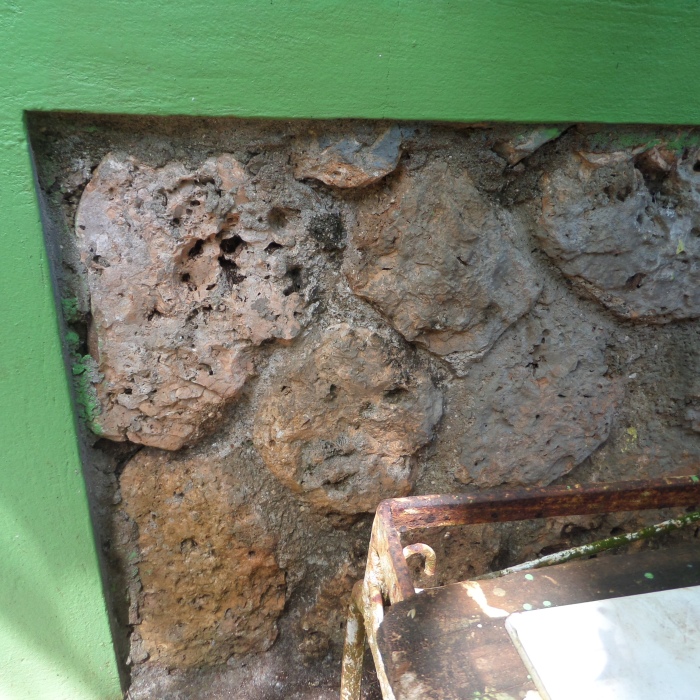
The original employment consisted of a shop keeper or two, a bar, harvesting various crops from the local plantations, carpentry, masonry and domestic work. Due to limited transportation people tended to stay local and keep jobs within walking distance. There are still those who do this work and rarely leave the community. The tourist industry was not so known. Ochi was not built up and was not a tourist port back in the day. This build up occurred when they built up the beaches. Main Street on the north side was where the sea touched. In fact building on the south side of the street used to flood out when the rains came and the tides came in. Things like Gem Palace, Jamaica Grande and Island Village are all standing where the ocean used to be. This build up of Ochi likely also affected the build up of Three Hills, as it brought in employment and the land was available.
The roads used to be nothing more than one main road made mostly of dirt and maul (calcium carbonate). Trips out of the area were burdensome and required either walking of catching the one bus that came up only twice a day, once in the morning and once at night. Trips to Ochi were definitely planned and only done as needed. Most people grew their own foods and there was no power to store so things were dispensed as needed. If a family had a pig to kill they found multiple neighbors interested in the meat for immediate consumption. Preserved meats were typically done by corning (think Corned Beef). Pork was preserved in a salt brine to hold it for a few days. Tripe and the pig head would be strung on metal hoops above the outdoor kitchen fire pit. The fire was built up using pimento and cedar to smoke the items overhead. A weekly trip to Content market was often a way to subsidize you own garden plots.
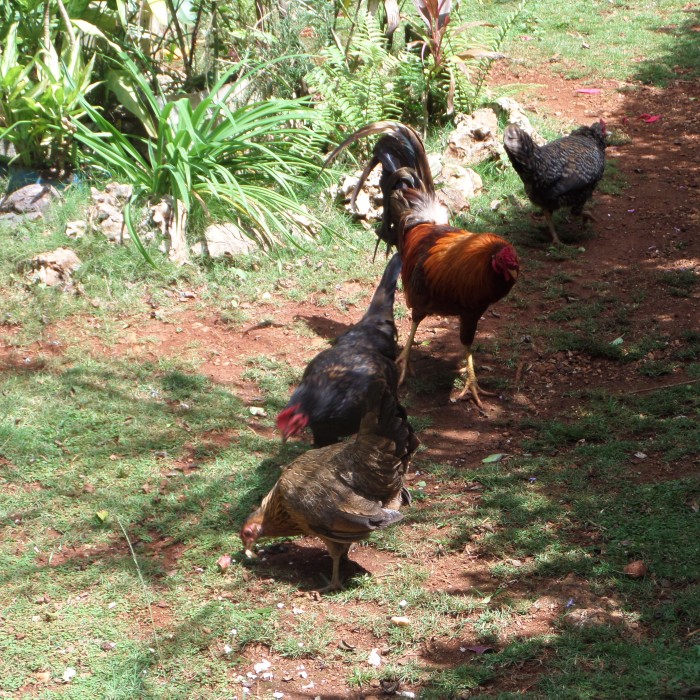
Traditional employment in the area aside from the farming and building, included domestic work. Women would hire out to clean person’s homes, do laundry and iron clothes, and dress making. Tower Isles had one hotel that a few persons would work at, but tourism was not a major source of employment like it is today.
The outdoor kitchen typically comprised of an open fire and/or a coal pot. They would not cook excess simply due to the lack of a way to store it. Meals often were much more vegetable based and comprised of soups and stew peas. Local cow’s milk was also much more available than now. Before power they used kerosene lamps, some of the churches might have used gas lamps to light night services. Church was not typically kept in a building. Open air services comprised of music and a short sermon were the norm. Tents might have been available, but most often it was open to the elements. The fact that there are about 10 churches in the area is a newer outcome.
Traditional remedies were and are still deeply imparted in the culture. The shift to bottled medicine is slowly happening, but many still hold onto the traditional remedies. Dispensaries is where you would go to purchase things like sulfur powder to apply to wounds and help heal them. In severe cases a trip to the doctor would require finding one, then getting to them.
Funeral practices are very much different than when Mrs. M. grew up. Before the bodies were buried within three days. This was due to the lack of ability to store them. Someone would come “spice” the body to keep the smell down and preserve it until the ceremony. The coffins were most likely built at home and instead of encrypting them there was a simple burial. Dead Yards were not a common thing and the family did not invest in a huge party for days on end to honor their dead. Most graves were back yard graves. The cemetery is a newer development. The coffins built at home were much cheaper and often much nicer made with love.
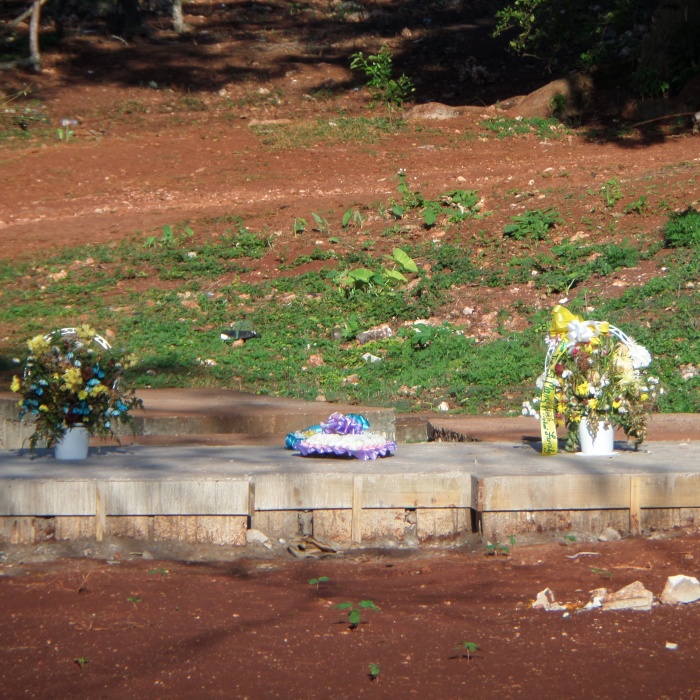
The biggest crimes in the area were likely robbers stealing from your outdoor kitchen. Persons would just have a small bolt to hold the door of the homes closed from the elements and animals. There was not much fear of persons breaking into your home or harming your person.
There were only a few shops in the community and one bar. Parties in the crossroads still happened, but not like they are today. The music was performed by persons with real instruments and the volume was only as loud as the instruments could play. Entertainment was much different. Parties did not go all night, but ended at more reasonable hours due to lack of lighting. One favorite memory for Mrs. M. was her father playing Queens party. A couple would dress up in fine clothes and wear crowns, likely hand made. The men would have swords made of wood and the idea was to be able to engage the king and distract him long enough to touch your sword to his queen. I cannot be certain if there are two sets of royalty or not. It seems this may possibly be closely related to a dance known as Bruckins. Her memory brought a very apparent joy to her face. I really wish I could find a definition of this or pictures. Maybe someone knows much more about this? I was disappointed to hear that the arts, painting and carving, were a much newer activity. I guess when you have little money or time to think about entertainment these things do not occur.
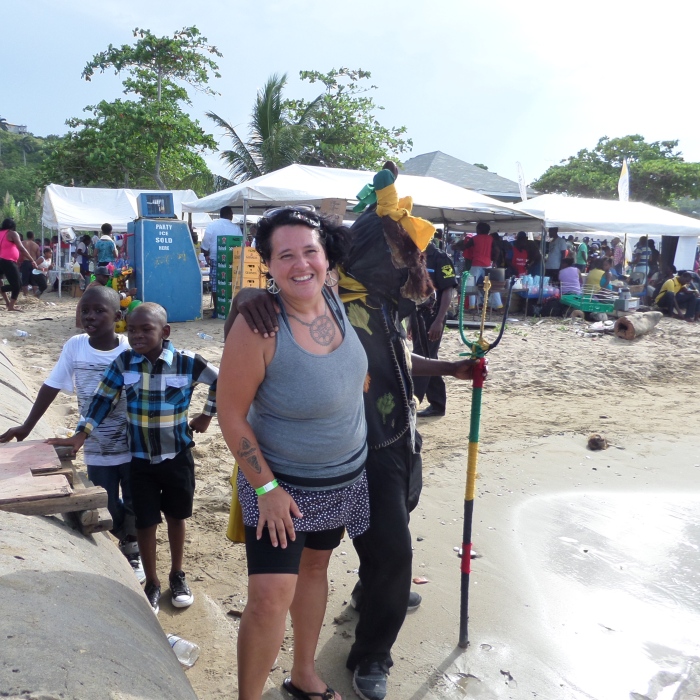
Along with the more traditional orchestral music, entertainment consisted of deeper culture than what we see in modern times. Dress for parties was much more modest and the music was less vulgar. Children played ring games, hopscotch, orange balls were used with bats formed from coconut branches flattened or a thin board. Cricket was a major event for the community, and this holds true today as well. Around Christmas time the Jonkonnu plays a very significant role. (The Bruckins link also mentions this.) This is representative of a story with person’s in costumes to represent the characters. The memory Mrs. M. gave me was this fear of the cow/bull because the children run from it and it will run you down. The “fear” is likely the adrenaline from the thrill of running.
Men would often sit around and smoke their own tobacco in pipes. Ganga was not as prevalent. Mrs. M. believes that the introduction of technology has increased idleness of many and the increase of Ganga usage. I am certain technology has increased the idleness, but I suspect the history of Ganga is much longer and deeper than she is aware. A research project for me if I care enough to research it.
The school system was much different. Basic schools were often run out of local women’s home. More like a home daycare and less structured with only a few students. There were two primary schools in similar locations to the current primary schools. The students would have to make the 2 mile trek down the hill in the morning to school and the 2 mile trek up the hill at night. Homework was completed immediately after school so as to not lose the light, kerosene lamps and candles were often the only ways of lighting the homes after dark. High school was not the same as today. (I am slightly confused as to how it was done.) Primary school went up to grade 9. Then the nearest high school was near Retreat/Content. I think as I understand it there was a finishing school with 1st year, 2nd year and 3rd year. I cannot be certain that I interpreted this correctly, I apologize.
The community now looks nothing like the community Mrs. M grew up in. The entire area has grown up to look like a mixture of farm land and suburban areas. The area is beautiful but does not look like the same area and where there was once much bush there are large homes in a developed scheme.




Interesting read…. I moved to Charles Town in 1969 and things were as Mrs. M said and I simpathise with her, because, as hard as life was back then, kids were poor and didn’t know it. I think it was that people were more grateful for, and satisfied with what they had. There was more love and it was a safer place because community was real. As kids, there was always something to do, trouble to get into, and fun to be had. Bordom was an forign and an alian word that never existed for us.
However, in the process of progress, we have lost more than we realize? Progress has happened and the real sense of community, traditions, culture, and family values have been been abandoned for the trinkets and bling of the West. The world has changed and we have all moved with the times or be left behind. Don’t get me wrongI have benefited from this progress as we all have, but would Mrs. M say, we are we better off now that we have an abundance of corruption, greed, crime, and moral decay?Mrs. M looks back and I am sure she would not trade the memories or experiences we we now realize was an adventure that comes with being a Jamaican.